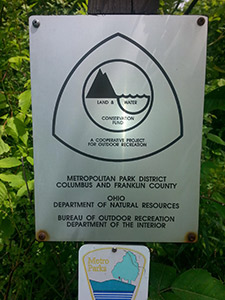 After months of delay and anticipation, Congress finally passed its year-end $1.1 trillion spending package—averting a government shutdown and keeping the government funded through September 30, 2016.
After months of delay and anticipation, Congress finally passed its year-end $1.1 trillion spending package—averting a government shutdown and keeping the government funded through September 30, 2016.
We’ve pulled the highlights that impact parks and recreation out of the 2,000 page spending package. By any standard, this year’s final federal spending package must be viewed as a success. It’s a win for NRPA and our supporters. We thank you and congratulate you on your committed advocacy efforts which resulted in strong investments at conserving our parks and natural resources, improving the health and well-being of future generations, and strengthening the fabric of our communities.
The spending package contained provisions to bolster each of NRPA’s pillars, including:
Conservation
- A three-year reauthorization of the Land and Water Conservation Fund (LWCF)
Health and Wellness
- Chronic disease prevention and physical activity promotion
Social Equity
- Community-based violence prevention and job training
Here are some highlights in the spending bill that touch on the great work NRPA members do to impact the lives of the people who visit our rec centers, parks, paths and pools.
Conservation
 In a major advocacy victory, NRPA is delighted that Congress has chosen to reinvest in the LWCF by:
In a major advocacy victory, NRPA is delighted that Congress has chosen to reinvest in the LWCF by:
- Reauthorizing the landmark legislation for three years.
- More than doubling the existing allocation for the State Assistance Program to $110 million. Included in this amount is $12 million for continuation of an urban competitive grant program which the National Park Service (NPS) began last year.
This is the largest allocation to the State Assistance Program in over a dozen years, showing that Congress is doing their part to support the $140 billion local park and recreation industry that supports nearly 1 million jobs. Going forward, we will continue to work enthusiastically with our partners on and off Capitol Hill to see the LWCF permanently reauthorized and fully funded and that the State Assistance Program is robustly supported.
Health and Wellness
On the health and wellness front, the omnibus bill boosts funding for arthritis research and prevention grants and ensures physical education remains a core part of a child’s education. The spending package also fosters outreach, dialogue and research to keep communities safe from violence. It also invests in cancer, obesity and heart disease research that will keep Americans healthy for years to come.
Major highlights were:
- $459 million was allocated for immunizations and respiratory diseases. This is funding that primarily goes to improving our response to annual flu outbreaks each winter and to developing flu vaccines. Unfortunately, $324 million of this amount was transferred from the Prevention and Public Health Fund (PPHF) which funds other public health priorities that reduce obesity, diabetes and cancer rates.
- $838 million for chronic disease prevention and health promotion including:
- $11 million for the Centers for Disease Control and Prevention’s (CDC) Arthritis Program. Several NRPA members have received Walk with Ease grants made possible by this program to help arthritis suffers reduce pain and discomfort, increase their balance and strength, and stay physically active.
- $56.95 million for the Racial and Ethnic Approaches to Community Health (REACH) program. REACH was previously unfunded in FY15, but due to the support of several organizations including NRPA, Congress reinstated funding for this important initiative. REACH seeks to help municipalities create customized and culturally appropriate programs to remove barriers to health caused by race, ethnicity, income, location or education.
- $210 million for the CDC’s Office on Smoking and Health. The Office on Smoking and Health seeks to reduce the number of deaths caused by tobacco use and exposure to secondhand smoke. Many park and recreation agencies have adopted no smoking policies in recent years andthe dollars from the Office of Smoking and Health fund campaigns to help Americans understand the impacts and dangers of smoking. These dollars go a long way toward helping parks transition to tobacco-free zones.
Nutrition and Physical Education
 The spending package also provided funding for a number of important nutrition programs that keep children, expectant mothers, seniors and low-income Americans healthy and fed when they aren’t visiting our parks or rec centers. These programs lighten the load for park and recreation agencies that serve meals during afterschool hours and summer months by shouldering some of the burden for struggling families.
The spending package also provided funding for a number of important nutrition programs that keep children, expectant mothers, seniors and low-income Americans healthy and fed when they aren’t visiting our parks or rec centers. These programs lighten the load for park and recreation agencies that serve meals during afterschool hours and summer months by shouldering some of the burden for struggling families.
The Not-So-Good Waivers
- The spending bill included exemptions for schools from the whole grain requirements instituted in 2010 under the Healthy Hunger Free Kids Act (HHFKA). In an effort to reduce obesity and health risks for children in America’s schools, HHFKA instituted standards to ensure that children are served whole grains as a part of a balanced, daily school meal. Some schools are struggling with the cost and complexity of including more whole grains in school meals. The spending bill allows struggling schools to request a waiver during the upcoming 2016 – 2017 academic year. NRPA opposes this exemption because we believe kids should have access to healthy meals in school and when they receive meals in our summer and afterschool programs.
- HHFKA also required schools to gradually reduce the amount of sodium in meals served to students. The spending bill includes a language that halts further reductions in school meal sodium levels until “the latest scientific research” proves that sodium reductions are “beneficial for children.” NRPA opposes this moratorium. We believe that all organizations should strive to serve kids the healthiest meals possible, just as we do during afterschool hours and the summer months.
The Better Stuff
- $47 million was set aside for the Carol M. White Physical Education Program (PEP). PEP helps schools initiate, expand and improve their physical education programs. Congress now recognizes the urgent problem of childhood obesity. This sudden increase in support for PEP is a direct response to the doubling of children with unhealthy body weights over the past 30 years.
Justice and Safety
- $5 million was allocated for gang and youth violence prevention through the U.S. Department of Justice. This represents a decrease of $5 million from the FY15 level. Juvenile violent crime arrests have fallen consistently since 1994. NRPA supports efforts to provide cities and municipalities with better information and strategies to prevent and respond to youth violence.
- $8 million was provided for community-based violence prevention initiatives, which include public health approaches to reducing shootings and violence. Despite the overall decrease in violent crime since 1994, too many cities and municipalities still struggle with gun violence. This program helps communities, faith-based leaders and advocates use data, enforcement and reentry strategies to change community norms surrounding violence.
Community Development and Transportation
 The spending package allocates $3 billion for the Community Development Block Grant (CDBG) – the same level as FY15. CDBG enables economically-distressed urban and metropolitan areas to rehabilitate outdated or dilapidated park and recreation facilities.
The spending package allocates $3 billion for the Community Development Block Grant (CDBG) – the same level as FY15. CDBG enables economically-distressed urban and metropolitan areas to rehabilitate outdated or dilapidated park and recreation facilities.
The flexibility provided by CDBG allows parks and recreation to address local needs. These highly-coveted rehabilitation dollars serve as catalysts for development and renewal in areas where they are needed most. In FY15 park and recreation agencies directly received $94 million in CDBG funding, and indirectly benefited from many other community development block grants to their communities.
- The popular Department of Transportation (DOT) TIGER Grant program will be funded at $500 million for FY16.
As we head into the 2016 Congressional calendar, the NRPA public policy team will continue working to ensure that Congress remains a reliable and dependable partner for park and recreation agencies everywhere. We encourage you to work with us by becoming a Park Champion and supporting our legislative efforts.
Kevin O’Hara, David Tyahla, Oliver Spurgeon and Jayni Rasmussen make up NRPA’s Public Policy Team.

